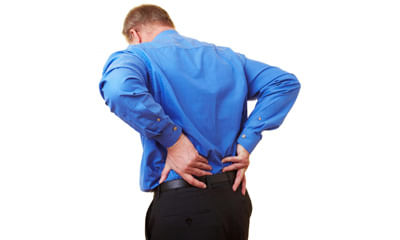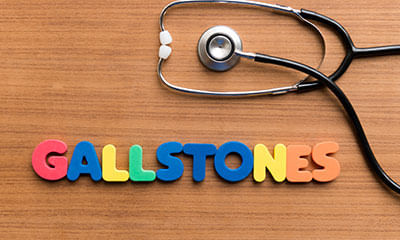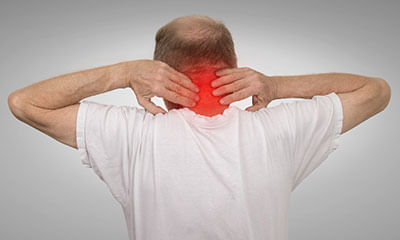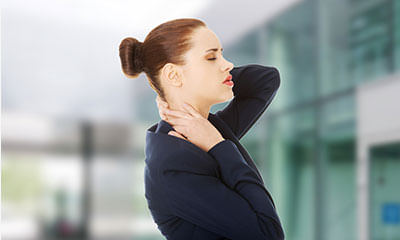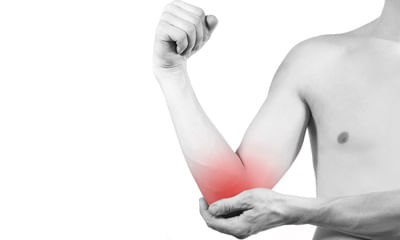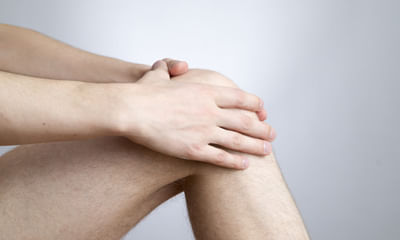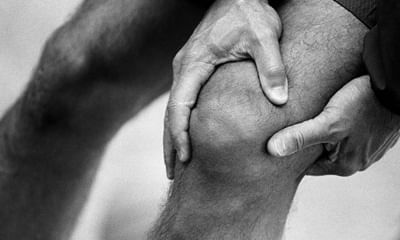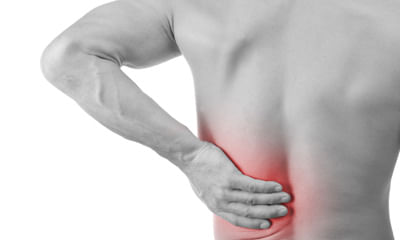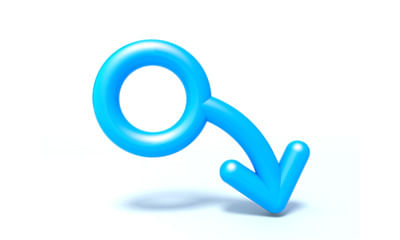Pain In Right Side Of Neck That Comes And Goes
My mother has a pain in upper back side she has gerd and fatty liver problem a year ago, plss help how to relieve from t ...
Ask Free Question
Upper back pain can occur anywhere between the base of the neck and the bottom of the rib cage. Upper back pain may be caused by injuries or fractures, poor posture, disk problems or other issues, such as arthritis.The common causes of upper back pain stem from inflammation and micro-tears in the muscles, tendons and ligaments of the upper back or from arthritis, herniated disks, vertebral stenosis, or misalignments in the thoracic or cervical spine.A combination of rest, over-the-counter pain medications, and using a heating pad or ice pack can help reduce swelling, relax muscles, and promote healing. You can also visit physiotherapy clinics for drug free treatment option.
My mother is 65 years old. She has diagnosed with gallstone. Distended with a calculus measuring 1.5 cm at the gb neck w ...
Ask Free Question
Hi, lybrate user, •Her diet be easily digestible on time to check gastric disorder that triggers gallstone pain.. •Tk,Fresh fruits and vegetables, whole-wheat bread, brown rice, oats, bran cereal, Lean meat, poultry, and fish.Low-fat . Consult , privetly for an advance mode of treatment to dissolve gall stone , successfully, till then, Tke, homoeopathic medicine : @ Chelidonium Q -10 drops, thrice with 2tsfl of normal water. Avoid, junk food, alcohol, Nicotine and caffiene. Tk, care.
Dear sir / madammy son (22) has been diagnosed with ankylosing spondylitis its early diagnosis. His hlab27 is positive. ...
Ask Free Question
Ankylosing spondylitis ankylosing spondylitis is a cause of back pain in adolescents and young adults. Ankylosing spondylitis is a form of chronic inflammation of the spine and the sacroiliac joints chronic inflammation in these areas causes pain and stiffness in and around the spine, including the neck, middle back, lower back, and buttocks. Over time, chronic inflammation of the spine (spondylitis) can lead to a complete cementing together (fusion) of the vertebrae, a process referred to as ankylosis. Ankylosis causes loss of mobility of the spine. Pt treatment deep breathing for lung expansion and stretching exercises to improve spine and joint mobility. Are also advised to sleep on a firm mattress and avoid the use of a pillow in order to prevent spine curvature. Aerobic exercise is generally encouraged as it promotes full expansion of the breathing muscles and opens the airways of the lungs. Home remedies physical therapy for ankylosing spondylitis includes instructions and exercises to maintain proper posture. This includes deep breathing for lung expansion and stretching exercises to improve spine and joint mobility. Since ankylosis of the spine tends to cause forward curvature (kyphosis), patients are instructed to maintain erect posture as much as possible and to perform back-extension exercises. Patients are also advised to sleep on a firm mattress and avoid the use of a pillow in order to prevent spine curvature. Ankylosing spondylitis can involve the areas where the ribs attach to the upper spine as well as the vertebral joints, thus limiting breathing capacity. Patients are instructed to maximally expand their chest frequently throughout each day to minimize this limitation. Physical therapists customize exercise programs for each individual. Swimming often can be a very beneficial form of exercise, as it avoids jarring impact of the spine. Ankylosing spondylitis need not limit an individual's involvement in athletics. People can participate in carefully chosen aerobic sports when their disease is inactive. Aerobic exercise is generally encouraged as it promotes full expansion of the breathing muscles and opens the airways of the lungs. Cigarette smoking is strongly discouraged in people with ankylosing spondylitis, as it can accelerate lung scarring and seriously aggravate breathing difficulties. Occasionally, those with severe lung disease related to ankylosing spondylitis may require oxygen supplementation and medications to improve breathing. People with ankylosing spondylitis may need to modify their activities of daily living and adjust features of the workplace. For example, workers can adjust chairs and desks for proper postures. Drivers can use wide rearview mirrors and prism glasses to compensate for the limited motion in the spine. You should check with your doctor before using compression socks for your swelling. These special socks should be properly fitted for you and your needs. Also, be sure to wear them during the day and remove them before you go to bed. Leg elevation if you stand a lot during the day, try propping your feet up or soaking them in water when you get home to help prevent swelling. Muscle relaxant: reduces muscle tension and helps relieve muscle pain and discomfort. Transcutaneous electrical nerve stimulation (also known as tens) is something which helps ease muscle pain and spasms. You can strengthen the muscles by doing tonificationie. Improving the tone of the muscles by adding either weight cuffs / sand bags which will help you to improve the strength of the muscle.
I had neck pain for a few days and now as i'm trying to move my left eyes round I feel the left side of my neck is throb ...
Ask Free Question
Movements of the head and eyes are known to be intimately related. Eye position has also been shown to be closely related to the electromyographic activity of dorsal neck muscles. When we put excessive strain on our eyes to see objects that are too far, too close, or too small, it can cause us to keep our head and neck in awkward positions for long periods of time. This can lead to muscle tension and stiffness – and as a result, neck pain. Visit near by physiotherapy clinic for proper treatment. Regards.
Long term shoulder/ shoulder blade pain, shoulder moved forward winter it gets worstlong term facial paining term pain i ...
Ask Free Question
The symptoms you've listed can be complex and may indicate various underlying health conditions. Given the wide range of symptoms affecting different parts of your body, it would be best to consult with a primary care physician initially. They can conduct a thorough assessment, review your medical history, and perform any necessary physical examinations. Based on your symptoms, the primary care physician may refer you to one or more specialists, depending on their assessment. Here are some specialists who may be involved in your care: neurologist: given your long-term headache, memory issues, and double vision, a neurologist specializes in evaluating and treating conditions affecting the nervous system, including the brain and nerves. Rheumatologist: if you're experiencing long-term body pain, weakness, and difficulty sleeping, a rheumatologist specializes in diagnosing and treating conditions affecting the joints, muscles, and bones, such as fibromyalgia or autoimmune disorders. Ophthalmologist: since you're experiencing long-term effects on your eyes, including double vision and changes in prescription, an ophthalmologist specializes in diagnosing and treating eye conditions and may perform a comprehensive eye examination. Orthopedic surgeon: if your shoulder and shoulder blade pain is persistent and affecting your mobility, an orthopedic surgeon specializes in diagnosing and treating musculoskeletal conditions, including injuries and disorders of the shoulder. Ent specialist (otolaryngologist): if you're experiencing long-term facial pain, pain around the ear, and difficulty sleeping due to these symptoms, an ent specialist can evaluate conditions affecting the ear, nose, and throat, such as temporomandibular joint (tmj) disorder or sinusitis. In terms of blood tests, your healthcare provider may recommend various tests based on your symptoms and suspected underlying conditions. These may include: complete blood count (cbc) comprehensive metabolic panel (cmp) thyroid function tests inflammatory markers (e.g. Erythrocyte sedimentation rate, c-reactive protein) vitamin d levels autoimmune markers (e.g. Antinuclear antibodies) lyme disease testing (if relevant based on your history and symptoms)
Sir, I have serious pain infrequent in my right shoulder since 10 years. Initial days I went to local doctor and they su ...
Ask Free Question
Based on the mri findings of your cervical spine, here are some observations and potential implications: mild lateral curvature of cervical spine with convexity of left side: this indicates a slight sideways curvature of the cervical spine, which may be contributing to your shoulder pain and other symptoms. Mild marginal osteophytes: osteophytes are bony growths that can develop along the edges of the vertebrae in response to degenerative changes in the spine. They can sometimes cause compression of nearby structures, leading to pain and other symptoms. Mild disc osteophyte complexes at c4-c5, c5-c6 levels: this refers to the presence of bone spurs and associated disc degeneration at specific levels of the cervical spine (cervical vertebrae 4-5 and 5-6). These changes may be contributing to compression of the thecal sac (the membrane that surrounds the spinal cord) and abutment of the spinal cord itself. Hydrosyringomyelia: this is a condition characterized by the presence of fluid-filled cavities (syrinx) within the spinal cord. In your case, it appears to be extending from the cervical to the dorsal (upper back) levels of the spinal cord. This can lead to symptoms such as pain, weakness, and sensory disturbances. Crowding at foramen magnum with mild tonsillar herniation: the foramen magnum is the opening at the base of the skull through which the spinal cord passes. Crowding at this location, along with tonsillar herniation (where the lower part of the cerebellum extends below the opening), can sometimes lead to compression of the spinal cord and related symptoms. Based on these findings, it's important to consult with a neurologist or spine specialist who can provide a comprehensive evaluation and recommend the most appropriate treatment options. Treatment may involve a combination of medications for pain management, physical therapy to improve strength and flexibility, and possibly surgical intervention depending on the severity of symptoms and underlying pathology. In terms of what you can do: follow the recommendations of your healthcare provider regarding pain management, activity modification, and any prescribed treatments. Consider seeking a second opinion from a spine specialist or neurosurgeon to ensure you have a comprehensive understanding of your condition and all available treatment options. Avoid activities that exacerbate your symptoms or put strain on your neck and spine. Maintain good posture and ergonomics to minimize stress on your cervical spine. Stay informed about your condition and ask questions during your medical appointments to ensure you understand your treatment plan and prognosis.
Hi I had acl surgery with bio screw hamstring and it's been 8 weeks now. I am not able to fully extend my knee differenc ...
Ask Free Question
Knee ligament laxity if you have problem in your legs then it might be due to ligament laxity where your legs would become very weak due to the old ligament injury and that should be treated immediately. Wear knee cap so that you will feel firm while walking or climbing stairs. This is a general strain and for this you can follow these measures: one keep a pillow right under the knee while sleeping, next is you can keep ice in the painful area for about 5--10 minutes, if pain still persists you can stretch your body by twisting the waist on both sides how we used to do in the school drill similarly you can try! one time you can do hot water fermentation that would help to reduce the muscle strain. You have to do knee strengthening exercises, ie. Knee rehabilitation exercises which will strengthen your knee. Exercises will give you permanent cure than the surgery. Physiotherapy management :you can take ultrasonic therapy in one of the nearby physiotherapy clinics which would help to heal the damaged cartilages along with shortwave diathermy which would help to improve the blood circulation. Knee pain: resisted terminal knee extension: make a loop with a piece of elastic tubing by tying a knot in both ends. Close the knot in a door at knee height. Step into the loop with your injured leg so the tubing is around the back of your knee. Lift the other foot off the ground and hold onto a chair for balance, if needed. Bend the knee with tubing about 45 degrees. Slowly straighten your leg, keeping your thigh muscle tight as you do this. Repeat 15 times. Do 2 sets of 15. If you need an easier way to do this, stand on both legs for better support while you do the exercise. Standing calf stretch: stand facing a wall with your hands on the wall at about eye level. Keep as arthritis is very common that you get generally bilaterally. Ice therapy would definitely help to reduce the inflammation. We also advise you to use knee cap which would help to prevent the knee from damaging further and also to maintain the quadriceps muscle tone knee pain, when leg folding time get pain. This must be due to your muscular strain and posture and it may not be due to any other reasons. It is better to correct your addictive behaviour by consulting the right physician. For the time being for the back pain, apply ice.Neck tilt: from the sitting position, tilt your head down so your chin touches your chest. Hold this position for 5 second s. Return to the starting position and repeat. Do this five times. Side-to-side neck tilt. From the same starting position, tilt you neck toward one shoulder, leading with your ear. Hold for 5 seconds and then return to the starting position. Do this five times on each side. Neck turn. Look straight ahead, then turn your head to one side, keeping your chin at the same level. Do this five times on each side. Neck stretch. Holding the rest of your body straight, push your chin forward, stretching your throat. Hold for 5 seconds. From the same starting position, push your chin backward and hold for 5 seconds. Do the forward and backward stretch five times each. If any of these exercises cause severe pain or weakness in your hands or arms, stop right away and talk with your doctor the importance of buying braces and splints from us – orthopaedic support braces we suggest you to wear knee brace which is available at our clinic. If you want you can buy from us, if you are far away from chennai we can send you by courier. The reason why we are conveying you to buy from us is we can demonstrate over the videocall (using whatsapp) and also we can monitor you throughout when to wear it and how long to wear it. And also if you find any difficulty wearing the brace you can also revert back to us for few more suggestions and we can propose you good solution how to go about it.
I have been suffering from left shoulder pain and neck pain for the last 3 years. Have gone to 4-5 physiotherapist who d ...
Ask Free Question
Counslt to cardiologist check urs tsh, lipid profile, rbs,hba1c some time shoulder pain occurred when increase in rbs or lipid if this pain associated with any gastro complications thn go for usg of abdomin thnks.
Asalamu alaikum Dr. shab 2 year ago I was pruning my orchard my right hand got tired I use my left hand unfortunately my ...
Ask Free Question
•mobility exercises rest. Avoid doing things that require you to bend at the hip or put a lot of pressure on the hip. Avoid sleeping on the side of your hip that is painful and sitting for long periods of time •cold and heat. Treating pain with heat and cold may help. Wrap an ice pack or a bag of frozen vegetables in a towel to ice your hip. A warm bath or shower may also help reduce your pain and prepare your muscles for stretching. •stretch. Gently stretching your body may reduce hip pain, especially if the cause is a strain or pinched nerve. 1. Knee lift1.Lie on the back, extending both legs flat along the floor. 2.Keeping the left leg straight, pull the right knee up toward the chest. 3.Place both hands on top of the knee to help pull it in toward the chest. 4.Hold the stretch for 10 seconds. 5.Let go of the knee and gently lower the leg back toward the floor. 6.Repeat this exercise 5–10 times on each knee. 2.double hip rotation 1.Lie flat on the back. Then, bend the knees and bring them toward the body until the feet are flat on the floor. 2.Gently rotate the knees to the left, lowering them toward the floor. Rotate the head to face the right while keeping the shoulders against the floor. 3.Hold this position for 20–30 seconds. 4.Slowly return both the head and knees to the starting position. 5.Repeat on the opposite side. 3.bridging 1.Lie on the back, bending both legs at the knee and placing the feet flat on the floor. Keep the arms by the sides of the body with the palms facing downward. If necessary, place a small pillow underneath the neck and head for support. 2.Slowly lift the pelvis and lower back upward. Be sure to keep the shoulders and upper body on the floor. 3.Hold the position for 5 seconds. 4.Gradually lower the back and pelvis toward the floor, starting at the top of the spine. Roll down through the spine until the entire back is flat against the floor again. 5.Repeat this exercise 5–10 times. 4.butterfly stretch 1.Sit on the ground, bend your legs, and bring the soles of your feet together so they touch, letting your knees fall out to the sides. 2.Bring your heels as close to your body as you can and lean forward into the stretch, using your elbows to gently push your knees toward the ground. 5.side lying leg raise 1.Lay on your right side with your legs straight and stacked on top of each other, propping yourself up with your elbow. If you’re using an exercise band, position it just above your knees. 2.Keeping your hips stacked, engage your core and lift your left leg straight up as far as you can. Slowly lower back down. Repeat on other side. 6.hip flexion 1.Stand upright. 2.Extend one arm out to the side and hold on to a sturdy surface, such as a wall, table, or chair, for support. 3.Slowly raise the right knee to the level of the hip or as far as is comfortable while keeping the left leg straight. 4.Only hold this position for a second before placing the left foot back on the floor. 5.Repeat with the left knee. 6.Do 5–10 repetitions of this exercise. 7.hip extension 1.Stand upright with the legs straight and the feet shoulder-width apart. 2.Extend both arms out in front and hold on to a chair, table, or wall for support. 3.Keeping the right leg straight, lift the left leg backward without bending the knee. 4.Lift the leg as far as possible without causing discomfort, then clench the buttock tightly and hold the position for 5 seconds. Repeat this stretch 5–10 times on each leg. To increase the resistance, try attaching small weights to the legs. 8.hip abduction 1.Stand upright. 2.Extend the left arm out to the side and hold on to something solid, such as a chair, table, or wall. 3.Starting with the feet together, lift the right leg out to the right side. Keep the left leg straight and avoid rotating the hips. 4.Hold the position for 5 seconds and then slowly return the leg to the starting position. Do this exercise 5–10 times on one leg, then repeat it on the other side.
I am 18 years old and I feel that my penis stay warm on the inside every time this starts when I stop while masturbation ...
Ask Free Question
You stop the release of sperms during masturbation and having pain in back and neck. I advise you not to hinder the normal process of ejaculation after masturbation. You can delay ejaculation after masturbation but not stop ejaculation and take proper balanced vegetarian diet. Take plenty of water daily. Take fruits and vegetables in daily diet. Follow this and be happy.

